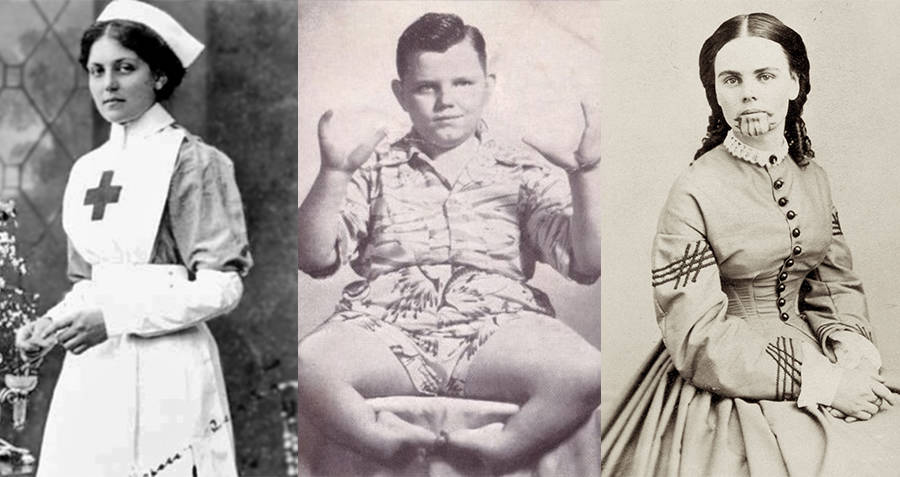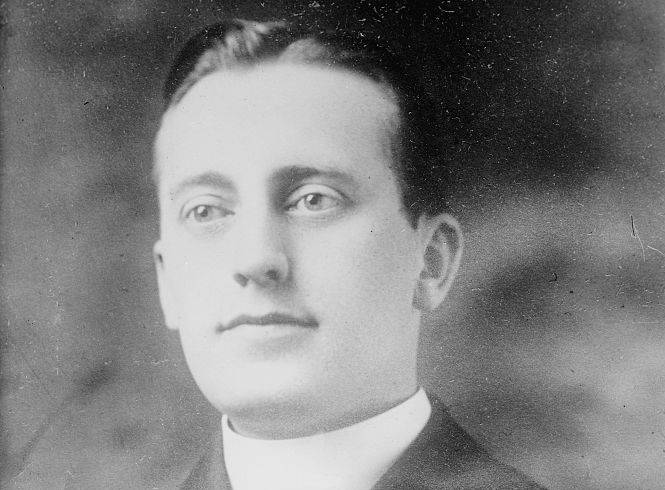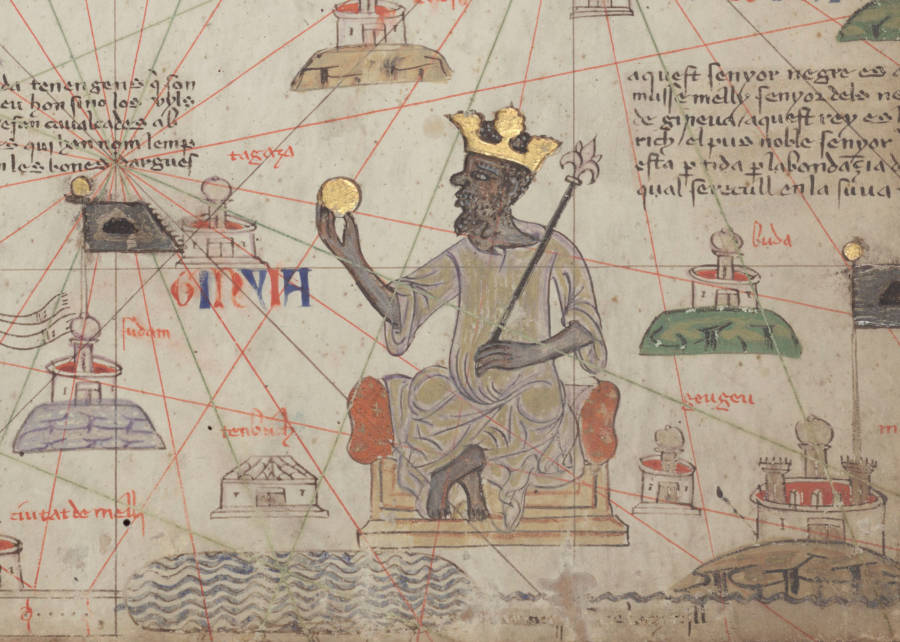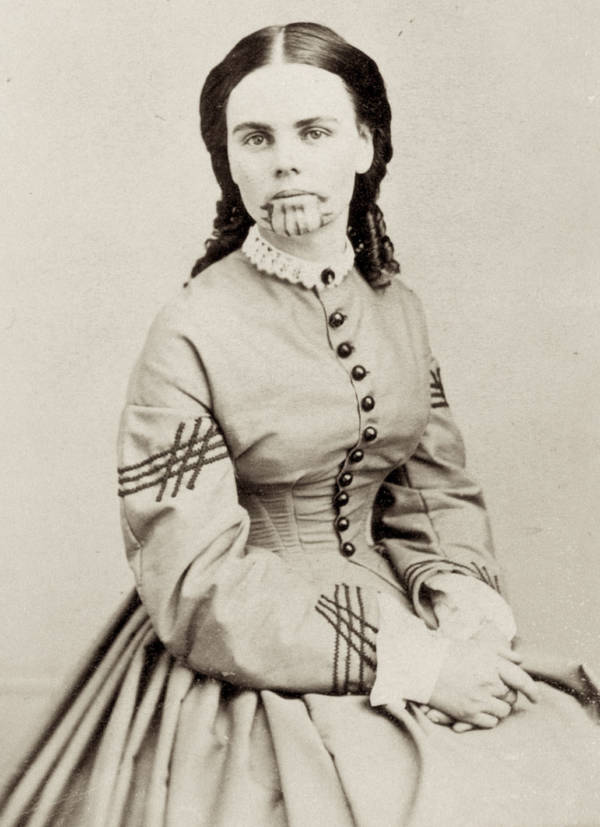10 Interesting Stories That Will Surprise Even The History Buffs
From “lobster boy” to the human zoo exhibit, discover the most interesting stories you’ve never heard.

ATI Composite
In studying history, one finds moments in time, interesting stories, that pierce the veil that separates us from history and reveals the diverse tapestry of events that is the past.
These include tales of unique individuals under extraordinary circumstances.
These stories will show that the past is much more complex, much more disturbing, and much more incredible than one can ever imagine.
Interesting Stories: The Serial Killer’s 175-Year-Old Head In A Jar

Obscuro Notícias/YouTube
Considered by many to be Portugal’s first serial killer, Diogo Alves was born in Galicia in 1810 and traveled to Lisbon as a young child to work as a servant in the affluent homes of the capital city.
It wasn’t long before young Alves realized that a life of crime was better for turning a profit, and in 1836, he had himself transferred to work in a home located on the Aqueduto das Águas Livres.
Despite the fact that those traveling across the Aqueduct were humble farmers returning home, Alves would lie in wait for them at nightfall, when he would rob them of their earnings.
Afterward, Alves would throw them over the edge of the 213-foot tall structure, sending them falling to their deaths. Between 1836 and 1839, he repeated this process some 70 times.
Local police initially attributed the deaths to copycat suicides, which led to a temporary closure of the bridge.
Alves then formed a group of bandits, before they were caught while killing four people inside the home of a local doctor, and Alves was arrested and sentenced to death by hanging.
But it’s what happened next that makes this one of history’s most interesting stories.
Scientists at the time wanted to study Alves’ head, to determine the origin of his murderous nature. For this reason, they had his head removed from his dead body and preserved in a jar for study — where it has remained ever since.
This severed head now sits in the University of Lisbon’s Faculty of Medicine where students can experience this chilling reminder of a horrifying man.
The Vicious Crimes Of Lobster Boy

Wikimedia Commons
Grady Stiles Jr., who would become known as “Lobster Boy”, was born in Pittsburgh in 1937 as the latest in a lineage of “Lobster Men” carnival sideshows who inherited the congenital deformity ectrodactyly, which fuses their fingers together into “lobster claws.”
Stiles’ case was pretty severe: In addition to his hands, he also experienced ectrodactyly in his feet, and therefore could not walk. For most of his life, he primarily used a wheelchair, but also learned to use his upper body to pull himself across the floor with impressive strength.
Limited by these deformities, Stiles grew up confined within the carnival world, and so it wasn’t surprising that as a young man he fell in love with another carnival worker named Maria Teresa, a young woman who had run away to join the circus as a teenager.
The couple soon married and had two children, but things took a turn for the worse when Stiles started drinking and, combined with his overpowering upper body strength, he became abusive toward his wife and children.
When Stiles’ teenage daughter, Donna, fell in love with a young man that he didn’t approve of, he murdered his daughter’s fiancé in cold blood on the eve of the wedding.
At his trial, he admitted his act with no remorse whatsoever, but pointed out that he couldn’t possibly be imprisoned because no jail could properly accommodate his disability. He was subsequently let off with 15 years probation and allowed to return home.
Though they had divorced during the trial, for reasons that no one, either in the Stiles family or outside of it, has been able to understand, his first wife agreed to remarry him in 1989.
When she returned, the beatings became more severe and few years after they remarried, she paid her 17-year-old neighbor, Chris Wyant, $1,500 to shoot and kill him, bringing one of history’s most incredible stories to an end.
Not one of them denied that they had killed Stiles. During the trial, his wife spoke at length of his abusive history. “My husband was going to kill my family,” she told the court, “I believe that from the bottom of my heart.”
The Woman Who Survived The Titanic — And Two Other Shipwrecks

Wikimedia Commons
Depending on your perspective, Violet Jessop was either the luckiest or unluckiest women to ever live. Either way, she certainly has one of the most interesting stories you’ll ever read.
Jessop was a stewardess on ocean liners who began her career aboard the Orinoco in 1908 at age 21.
She started with the White Star Line when she went aboard the HMS Olympic, one of three Olympic class cruisers created by the company, in 1910.
A year later, while Jessop was still working aboard the ship, it collided with the British warship the HMS Hawke while the two were passing through a narrow strait. Though both vessels were damaged by the encounter, it did not completely destroy either ship and there were no fatalities.
While the Olympic was being repaired, Violet was employed aboard another White Star Line ship, and the sister vessel to the Olympic, the RMS Titanic. Jessop was onboard when the Titanic struck an iceberg and sank, but was able to find a lifeboat and survived.
Despite these two sea accidents she had been a part of, Jessop was undeterred, and during World War I, she served as a Red Cross stewardess aboard the HMHS Britannic.
It had been converted into a hospital ship and was transporting injured soldiers to the United Kingdom when they hit a German mine in the Aegean Sea and sank.
While escaping the sinking ship on a lifeboat, Jessop and many other passengers were almost sucked into the ship’s propeller blades, but narrowly escaped, cementing her reputation as “Miss Unsinkable.” She would later recount her harrowing story in Titanic Survivor: The Newly Discovered Memoirs of Violet Jessop who Survived Both the Titanic and Britannic Disasters.
The Human Zoo Exhibit

Wikimedia Commons
Ota Benga was a Mbuti pygmie tribesman born in the Ituri Forest of the Congo in 1883.
Benga married young and fathered two children, but his dreams of living a normal life were shattered when, sometime in the 1890s, Belgian colonial troops came across his village and killed his entire family while he was out hunting.
Without a family or tribe, Benga was lost and had no place in the society he had grown up in. Surprisingly, at this point, some of Benga’s most trying times were still ahead of him.
Shortly after the death of his family, Benga was captured by slave traders and put to work on an industrial farm. It was there, in 1904, that Benga was discovered by, of all people, an American businessman named Samuel Verner with racist beliefs about evolution.
He thought that Benga, with his short stature, dark skin, and sharp teeth, filed as part of a cultural ritual, was a “missing link” between humans and our evolutionary ancestors. He then purchased Benga for a bag of salt and a bolt of cloth.
Verner’s group promptly brought Benga to St. Louis, where he was the hit of the 1904 World’s Fair. Following the exhibition, Benga briefly returned to Africa, where he remarried, but returned to the U.S. after his wife died from a snake bite.
He was later placed in the ape enclosure at the Bronx Zoo, displayed as part of the New York Anthropological Society’s exhibit on human evolution. Local black clergy were appalled by the exhibit and demanded Benga’s release. They successfully lobbied the governor to force the zoo to shut down the display.
Benga then briefly lived in Virginia working at a tobacco plant. In 1914, he decided to return to Africa, but when World War I broke out, he was unable to do so.
On March 20, 1916, depressed at the thought of not being able to return home, Ota Benga shot himself in the heart and died, bringing an end to one of history’s most heartbreaking yet also interesting stories. Pamela Newkirk would later document the life of Ota Benga in the award-winning Spectacle: The Astonishing Life of Ota Benga.
Interesting Stories: The Only Catholic Priest Ever Executed In U.S. History

Wikimedia Commons
Hans Schmidt was an unusual child. He was born in the German town of Aschaffenburg in 1881 and had an eerie childhood habit of spending his afternoon watching the cows and pigs be processed through the local slaughterhouse.
He was also entranced by Roman Catholic rituals, and played priest with a homemade altar. These two childhood passions would eventually converge in an unsettling way.
A 25-year-old Schmidt was ordained in Germany in 1904, but by 1912 found himself at St. Boniface Church on the east side of Manhattan.
But he wasn’t the only recent addition to St. Boniface at the time; a young Austrian housekeeper named Anna Aumuller had recently been hired to keep shop. Schmidt and Aumuller then began having an affair.
On February 26, 1913, Schmidt married Aumuller in a secret ceremony that he performed himself. However, later that year, Aumuller told Schmidt that she was pregnant, and he knew that his days as a priest would be over if word got out that a purportedly celibate Catholic priest had married and impregnated a woman.
On September 2, Schmidt slashed Aumuller’s throat with a 12-inch butcher’s knife in a Manhattan apartment that he had rented for her. He then sawed off her head with a hacksaw and sliced her body in half, finally dumping her remains in the Hudson River.
When the body washed up days later, police traced the remains back to Schmidt. Within minutes, he confessed to the marriage and murder of Aumuller, claiming “I loved her. Sacrifices should be consummated in blood.”
The jury convicted Schmidt of first-degree murder and sentenced him to death by electric chair. Schmidt was electrocuted to death on February 18, 1916. To this day — and this is what truly makes his tale one of history’s most interesting stories — Schmidt is the only priest to ever be executed in the United States.
America’s First Supermodel, Who Died In A Mental Asylum

Wikimedia Commons
To refer to Audrey Munson simply as a supermodel would be dismissive, as the iconic Gilded Age star was a renowned artist’s model, clothing model, and film actress whose fascinating tale stands out among a crowded field of similarly interesting stories.
She was, in fact, the model for some the most iconic sculptures in New York City, including the massive, 25-foot-tall statue perched atop Lower Manhattan’s Municipal Building: Civic Fame.
Born in Rochester, New York in 1891, Munson moved to New York City when she was still a teenager. She was first discovered when a photographer spotted the young beauty in a Fifth Avenue store window.
This led to Munson’s initial collaborative work with various photographers and sculptors, who were drawn to her tall, photogenic frame and “neoclassical” features. This fame also led to her being cast in silent films of the era.
Despite her fame, Munson received little compensation and was not able to save up enough to support herself after her star had faded. By the 1920s, as her popularity decreased, she and her mother moved to upstate New York.
With no savings to speak of, Munson took work as a waitress. It was during this time that she began to demonstrate signs of mental illness, such as her insistence on being known as “Baroness Audrey Meri Munson-Munson.”
She blamed her downfall on Jewish people, and her outspoken anti-Semitism led her so far as to contact the U.S. House of Representatives, insisting that they create a law that would protect her from “the Hebrews.”
At the age of 40, Munson was sent even further upstate to Ogdensburg, along the Canadian border. There, she would reside at St. Lawrence State Hospital, where she would live for many years.
Toward the tail end of her life, the hospital threw Audrey out to make room for incoming patients and moved her to a nearby nursing home. Audrey Munson eventually ended up back in the rooms at St. Lawrence, where she died at the age of 104. Her story inspired the biographical book The Curse of Beauty: The Scandalous & Tragic Life of Audrey Munson, America’s First Supermodel.
Perhaps The Richest Person Who Has Ever Lived

Wikimedia Commons
Perhaps the richest person who ever lived, Mansa Musa I has (despite being at the center of one of history’s most interesting stories) largely been forgotten by history due to a lack of focus and study on Africa, from which he came.
Musa became emperor of Mali in 1312 when then-emperor Abubakari II deputized Musa to temporarily assume his role. Through trading gold and salt, which were found in abundance in West Africa at the time, Musa amassed an enormous fortune.
Though Musa had become fabulously wealthy through trade, the rest of the world only became aware of the extent of his wealth when he embarked on a pilgrimage to Mecca.
His caravan traveled throughout Cairo, Medina, and finally to Mecca with a procession of more than 60,000 people, dozens of animals, and plenty of gold. In fact, as they traveled, Musa and his entourage gave gold away to people in the streets.
They bought so many goods that they messed up the global economy for a while because he sizably increased the amount of gold in circulation.
Musa used his gold to build a great number of mosques, to the point that legend says he built one every Friday of his reign. The most famous of the mosques he commissioned is the Djinguereber Mosque in Timbuktu, Mali.
When adjusted for inflation, Musa’s wealth is believed to have been around $400 billion. The only person who comes close to Musa’s wealth is John D. Rockefeller, who economists believe amassed a worth of around $336 billion when adjusted for inflation.
The Mormon Girl Who Was Raised By The Mohave

Wikimedia Commons
Born in 1837, Olive Oatman was one of seven siblings all raised in the Church of Jesus Christ of Latter-day Saints before she found herself at the center of one of the most interesting stories of the American West.
In 1850, when Oatman was just 13 years old, her parents joined a Mormon wagon train traveling to California. Midway through their journey, the Oatmans were attacked by members of the Western Yavapai tribe who slaughtered her parents and four of her siblings.
Oatman was then taken captive by the Yavapai and kept as a slave at their nearby village where she was forced to forage for food and carry firewood, and was often beaten and otherwise mistreated if she did not comply.
After a year with the Yavapai, she accompanied them to an inter-village trade, where she was sold to the Mohave tribe for a horse. The Mohave were much more prosperous than the Yavapai and, luckily for Oatman, were also more compassionate.
Oatman was given a plot of land to farm and traditional Mohave clothes to wear, and she was also tattooed on her chin and arms, a tribal custom reserved for members of the tribe.
Then, when Oatman was 19 years old, a messenger arrived at the Mohave village from Fort Yuma, saying they had heard there was a white girl living with the Mohaves and demanding that she be returned.
Fearing the white men would destroy them, the Mohaves brought Olive to Fort Yuma, where officers dressed her in Western clothing, deeming her Mohave clothing, consisting of a skirt and nothing above the waist, to be inappropriate.
Oatman then reintegrated into American society after a few years, though she always looked back on her time with the Mohave fondly. She would later recount her experience in the book The Captivity of the Oatman Girls Among the Apache and Mohave Indians.
Interesting Stories: The Man Who Revolutionized Medicine Only To Be Ridiculed For It

Wikimedia Commons
Ignaz Semmelweis was a doctor who made a huge medical breakthrough that remains important to this day, although at the time he was shunned and ridiculed for his ideas.
While working in a Vienna maternity clinic in 1847, Dr. Ignaz Semmelweis noticed a disturbing trend: New mothers were dying in droves due to some mysterious ailment known as “childbed fever.”
Semmelweis resolved to figure out what was behind these deaths, and started by looking for disparities between the hospital’s two maternity wards, and discovered that women treated in the doctors’ ward were dying at a rate nearly five times that of those in the midwives’ clinic.
Semmelweis realized that the difference between the doctors and the midwives was that doctors performed autopsies in addition to delivering babies, and often went straight from one procedure to the next.
He hypothesized that the doctors were spreading material from dead bodies to maternity ward patients, and concluded that by stopping the route of transmission, he could likely stop the spread of the fever.
Semmelweis then pioneered disinfection measures, mostly using the chemical chlorine. After implementing the simple policies that maternity wards needed to be kept clean, and that doctors needed to wash their hands, the rate of childbed fever dropped dramatically
Despite proving that disinfection reduced mortality to below one percent, Semmelweiss’ technique was rejected by most doctors of his time because they felt that it was insulting to require them to wash their hands.
Constant criticism and hounding from the medical community led Semmelweis to have a nervous breakdown that placed him in a mental asylum, where he eventually died in 1865, bringing his tale, one of recent history’s most interesting stories, to an end.
The irony of his death is that many historians believe he died of sepsis, the same thing that killed all those women on the maternity ward.
The Prostitute Turned Pirate Queen

Wikimedia Commons
Born in 1775, Ching Shih grew up in the Guangdong province of southeastern China, where at one point she worked as a prostitute on a floating brothel.
In 1801, the famed Zheng Yi, pirate commander of the Red Flag Fleet, raided the brothel, and was so struck by Shih’s beauty that he asked her to marry him. Shih said yes to Yi’s proposal, but only after Yi agreed to give her equal partnership in fleet leadership, as well as 50 percent of the admiral’s share of anything attained.
Just six years after marrying Shih, Yi fought his last fight amid the Tay Son Rebellion in Vietnam, where he died in 1807. Seeing an opportunity to rise to power, Shih then took command of the entire squadron.
Shih’s fleet went on to pillage the south China coast, taking over several towns and taxing countless others. Also under Shih’s rule, the fleet would sink 63 Chinese government vessels, which prompted the British and Portuguese navies to stay out of her affairs.
Three years after Shih assumed rule over the Red Flag Fleet, the Qing emperor, seeing no way to curb the pirate fleets, offered amnesty to anyone willing to give up their pirating ways and return to the mainland.
She returned to civilian life, bringing with her the vast wealth she acquired from her piracy (as well as one of the most interesting stories in recorded history). She then went on to marry a former underling, Pao. Together they returned to the Guangdong province, where Shih opened and operated a gambling house until her death in 1844.